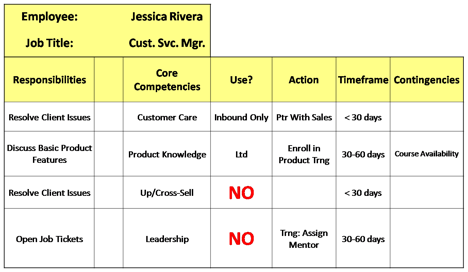 Imagine being able to unleash the hidden talents and untapped skills of every single one of your employees?
Imagine being able to unleash the hidden talents and untapped skills of every single one of your employees?
Imagine if every single one of your employees, from front-line staff to senior management, was 100% engaged, doing the work they were cut out for, contributing to the success of your organization by focusing on their core competencies.
Can you envision the collective power you would unleash? No laggards … just a company filled with rising stars. Absenteeism would drop instantly, worker defections to your competitors would cease entirely. Entire departments would start exceeding quotas.
You would become a preferred employer, and employee recruitment would be an exercise in picking the talent you wanted. Better yet, what if I told you this can be achieved and without the tremendous cost and resource drain of investing in hard-to-measure training programs? That long-sought-after seat at the management table would suddenly materialize for you.
Does this sound too good to be true? Well, it’s not. There is a beautifully simple tool called a “human capital development audit” that you can implement immediately to achieve these results.
Here’s how it works: For each employee in your organization, you match the roles and responsibilities of the job they are employed in with their skills, core competencies, and experience. Be as expansive and broad as possible in identifying their skills. Consider their academic training, software skills, certifications, professional development, leadership, cultural diversity … everything!
The diagram above illustrates a human capital audit conducted for the fictitious customer service rep Jessica Rivera. After identifying all the roles and responsibilities she is tasked with accomplishing, you then detail her skills. Use a spreadsheet and simply line up the roles and skills along one another in facing columns.
These should be obtained through interviews with Jessica, her current (and any past) managers, her coaches/mentors, peers she has worked with, etc.
After that is accomplished you drill down to identify which skill sets that she possesses that are not being used. In order to maximize the positive impact to your organization from an ROI perspective, you should prioritize those skills that she is not currently using, based on her ability to generate revenues, reduce costs, improve your organization’s processes, etc.
Next, you must develop an action plan for all of the highest priority non-leveraged skills that Jessica possesses. For each untapped skill, set a time frame for completion and any contingencies, or potential barriers, that would prevent her (and her manager) from making those untapped skills part of her newly redesigned job description.
In Jessica’s case, she is adept at using her persuasive, good-natured personality to suggest complimentary products to cross-upsell to her company’s existing clients. It’s her nature to take care of her clients, and she naturally knows how to ask probing questions. She also has an uncanny knack for being a leader on her team. She’s the one who other customer service reps in her unit turn to for advice, even before they engage their own line managers. These are powerful skills to have in a customer care manager and yet, in this scenario, they are not being used.
For this human capital audit to work, it has to be embraced by your senior management, owned by human resources, and conducted for all departments and levels of your organization. It should be reviewed quarterly, and merit-based compensation plans should be developed for employees that integrate untapped core competencies into their new roles and responsibilities.
Having said that, most HR professionals that I work with and lecture indicate this is not possible. They claim it is a big-time commitment, and doesn’t seem to be something that can be quantified, in terms of impact to the organization.
I would offer that, in this challenging economic environment, even if you only achieve a 50% increase in each employee’s productivity, the positive potential impact to your company would be great. I guarantee that a 50% increase in your entire organization’s productivity will force senior management to take notice of human resource’s role as a strategic partner in driving value through the organization.